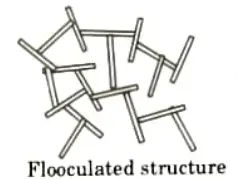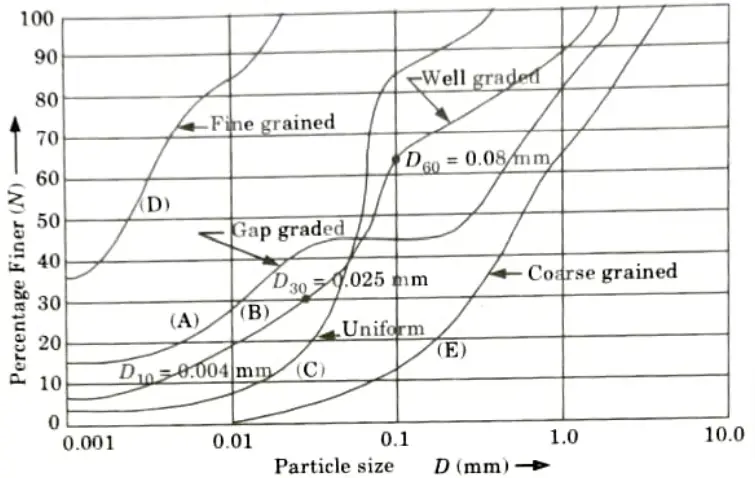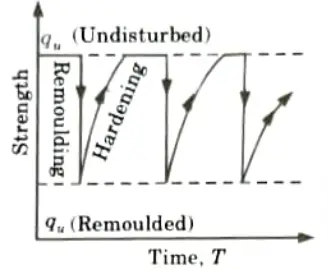With Aktu Btech Quantum Notes, improve your readiness for the Geotechnical Engineering test. Your path to success lies in these crucial, in-depth resources and frequently asked questions. Improve your education right now! Unit-1 Origin and Classification of Soil
Dudes 🤔.. You want more useful details regarding this subject. Please keep in mind this as well. Important Questions For Geotechnical Engineering: *Quantum *B.tech-Syllabus *Circulars *B.tech AKTU RESULT * Btech 3rd Year * Aktu Solved Question Paper
Q1. Explain different types of transported soil.
Ans. Types of Transported Soils: Following are the various types of transported soil:
- 1. Water Transported Soils: Large amounts of soil are carried by flowing water, either in suspension or by rolling along the bed.
All type of soils carried and deposited by water are known as alluvial deposits. Deposits made in lakes are called lacustrine deposits.
- 2. Wind Transported Soils: Soil particles are transported by winds. Soils deposited by wind are known as aeolian deposits. Loess is a silt deposit made by wind.
- 3. Glacier-Deposited Soils: Glacial deposits are created as a result of the material contained in the ice being deposited on the ground as the glaciers melt and retreat.
- 4. Gravity-Deposited Soils: Under the influence of gravity, soils can be moved. Talus is a type of colluvial soil that has been deposited by gravity.
Q2. Discuss various field and laboratory methods of water content determination of soils.
Ans. Water content of soil can be determined by any of the following method:
A. Oven Dry Method:
- 1. This method is a standard, laboratory method.
- 2. In this method, water content is computed in following steps:
- i. Moist sample of soil whose moisture content is to be determined is placed in an empty container of weight (M1).
- ii. Let the weight of container with moist soil sample be (M2).
- iii. The container with moist soil is placed in a temperature control oven for drying at the temperature of 110 ± 5 °C.
- iv. For inorganic soil like sand drying is require for 4 hours and for clays and silt drying is require for 12-16 hours.
- v. After drying weight of container with dry soil is noted (M3).
And now,



B. Sand Bath Method:
- 1. This is a field method for determination of water content.
- 2. A sand bath is large open vessel containing sand filled to a depth of 5 cm more.
- 3. The soil is taken in a tray. It is crumbled. A few pieces of white paper are also kept on the sample.
- 4. Mass of wet sample is obtained by weighing the tray.
- 5. The tray is then placed on sand bath.
- 6. The sand bath is heated over a stove.
- 7. During heating, the sample is turned with a palette knife. Overheating of soil should be avoided. The white paper turns brown when overheating occurs.
- 8. When drying is complete, the tray is removed, cooled and weighted.
- 9. The water content is determined by,



C. Alcohol Method:
- 1. The sample is broken, crumbled and taken in an evaporating dish.
- 2 The mass of wet sample is taken (M1).
- 3. The sample is then mixed with alcohol.
- 4. About one milliliter of alcohol is added for every gram of soil.
- 5. The alcohol is then ignited. The mixture is turned with spatula when ignition is taken place.
- 6 After the alcohol is burnt away completely, the dish is allowed to cool and mass of dry soil is obtained M2).
- 7. Water content is found out as follows:



- 8 This method cannot be used if the soil contains a large proportion of organic matter, gypsum and any other calcareous materials.
D. Calcium Carbide Method:
- 1. Both the field and the lab can use this technique.
- 2. The tool employed is referred to as a quick moisture tester.
- 3. This technique takes advantage of the fact that acetylene gas is produced when water reacts with calcium carbide.
- 4. The pressure that the acetylene gas exerts is measured in the dial gauge that is connected to the moisture tester.
- 5. A 6 gramme sample of dirt is collected in a calcium carbide-filled tent cylinder.
- 6. It is necessary to crush and grind the soil sample.
- 7. The dial gauge displays the pressure-based amount of gas produced.
- 8. From the calibrated scale of pressure gauge, the moisture content based on total mass is determined.
- 9. The water content (w) based on dry mass is calculated as,



where, W = Weight of sample.
Q3. Write short note on:
1. Single-grained structure.
2. Honey comb-structure.
3. Flocculated structure.
Ans. 1. Single-Grained Structure:
- i. Bulky grains make up cohesionless soils like gravel and sand, where gravitational forces predominate over surface forces.
- ii. When these soils are deposited, the particles gravitationally pull themselves into an equilibrium position as depicted in Fig (a). Every particle interacts with those around it. Single-grained structure is the name given to the resulting soil structure.
2. Honey-Comb Structure:
- i. Fine sands or silts may be deposited in such a way that when they settle, the particles form a particle-to-particle contact that spans significant spaces in the soil mass (Fig. (b)). The particles form a sturdy wedge-shaped structure that resembles an arch to support the weight of the substance above. The resulting structure is referred to as a honeycomb structure.
- ii. When the particle size is between 0.002 mm and 0.02 mm, the honey-comb structure typically forms.
- iii. Honey-comb structures appear in soils with tiny, minute granular particles that have cohesiveness. Loose soils make up a honeycomb structure.
3. Flocculated Structure:
- i. Clays have a flocculated structure. Due to the huge surface area of the clay particles, electrical forces play a significant role in these soils.
- ii. The edges of the clay particles are positively charged, whereas the surface is negatively charged.
- iii. Positively charged edges and negatively charged faces come into contact with one another, creating interparticle interaction. As seen in Fig., this causes a flocculated structure.



Q4. What are the limitations in the use of Stoke’s law in sedimentation analysis ?
Ans. A. Sedimentation Analysis:
- 1. It is being done for particles smaller than 0.075 millimeters (fine grain particles).
- 2. Even by sedimentation, particles with a size of less than 0.0002 mm cannot be examined. X-ray diffraction or an electron microscope can be used to examine these particles.
- 3. This analysis is based on Stoke’s law. According to Stoke’s law, the shape, size, and mass of a particle which is considered to be spherical during settlement determine its velocity while holding all other variables constant.



B. Limitations: Following are the limitations of Stoke’s law:
- 1. When the liquid is infinite, only Stoke’s law applies. Results are somewhat impacted by the jar’s walls being there.
- 2. In Stoke’s law, it is assumed that only one sphere settles and that no other spheres are present to cause interference. There is some disturbance in the sedimentation analysis as several particles settle concurrently.
- 3. Because of the development of turbulent circumstances and the inapplicability of Stoke’s law, the sedimentation analysis cannot be used for particles larger than 0.2 mm.
- 4. The sedimentation method is not applicable for particles smaller than 0.2𝜇 because Brownian movement takes place and the particles do not settle as per Stoke’s law.
Q5. What is the use of particle size distribution curve ? With the help of particle size distribution curve.
Ans. A. Particle Size Distribution Curve:



B. Uses: Following are the uses of particle size distribution curve:
- 1. It is employed in the classification of soils with a coarse grain.
- 2. The particle size is used to determine how susceptible a soil is to the effects of frost.
- 3. It is necessary for the drainage filter design.
- 4. It offers a measure of the soil’s shear strength. A well-graded, compacted sand typically has a high shear strength.
- 5. The curve of a soil can also be used to determine its compressibility. More easily compressible than a well-graded soil is a uniform soil.
- 6. It is helpful for pavement design and soil stability.
- 7. It might reveal how a soil was deposited. For instance, soil with a gap grade implies deposition by two distinct processes.
Q6. Write short note on thixotropy of clay.
Ans.
- 1. The strength of naturally formed clays is diminished when they are remoulded because the original clay structure is damaged.
- 2. Both the alteration of the soil’s structure and the disruption of the water molecules in the absorbed layer contribute to the loss of a soil’s strength as a result of remoulding.
- 3. Some of these modifications can be undone.
- 4. A remoulded soil may restore part of its lost strength if let to remain without losing water.
- 5. In soil engineering, thixotropy refers to the soil’s increase in strength over time after it has been remoulded.



- 6. It is primarily caused by the re-establishment of chemical equilibrium and the progressive reorientation of water molecules in the adsorbed water layer.



Important Question with solutions | AKTU Quantums | Syllabus | Short Questions
Geotechnical Engineering Btech Quantum PDF, Syllabus, Important Questions
| Label | Link |
|---|---|
| Subject Syllabus | Syllabus |
| Short Questions | Short-question |
| Question paper – 2021-22 | 2021-22 |
Geotechnical Engineering Quantum PDF | AKTU Quantum PDF:
| Quantum Series | Links |
| Quantum -2022-23 | 2022-23 |
AKTU Important Links | Btech Syllabus
| Link Name | Links |
|---|---|
| Btech AKTU Circulars | Links |
| Btech AKTU Syllabus | Links |
| Btech AKTU Student Dashboard | Student Dashboard |
| AKTU RESULT (One VIew) | Student Result |
